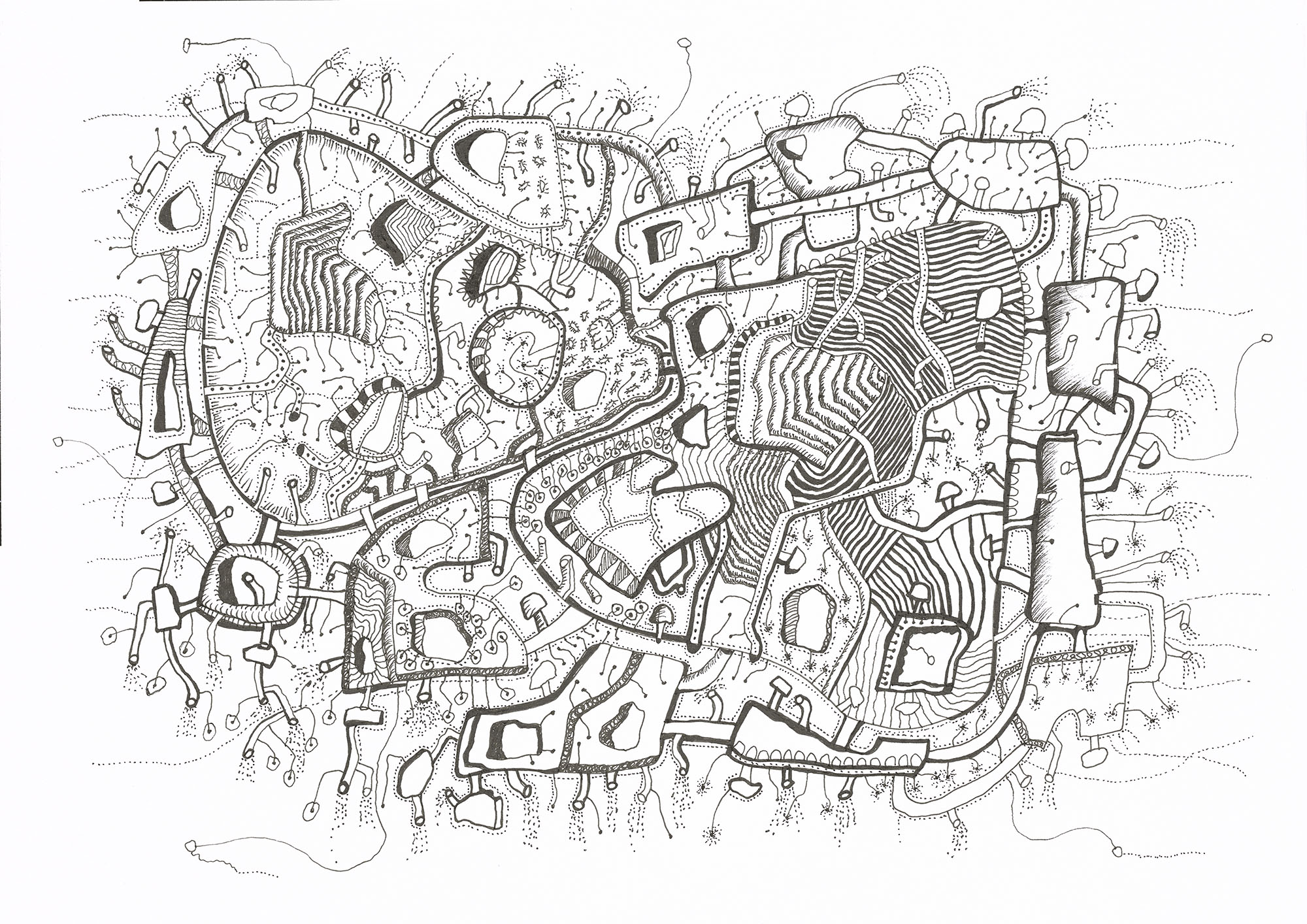- Incorrect Diagnosis, 30 × 21 cm;
- Clone 813, 30 × 21 cm;
- Virus Repository, 30 × 21 cm;
- Probe 91, 30 × 21 cm;
- Mosquito 2, 30 × 21 cm;
- Cloned Universe, 30 × 21 cm;
- Virus 463, 30 × 21 cm;
- Perfect Genotype, 30 × 21 cm;
- Virus 79, 30 × 21 cm;
- The beginning of history, 21 × 15 cm;
- Chimneys in the brain, 21 × 30 cm;
- Amplified viruses and bacteria, 30 × 21 cm;
- Genotype 419, 21 × 30 cm;
- Virus mutant, 30 × 21 cm;
- Virus 18, 21 × 30 cm;
- Winning Combination, 30 × 21 cm;
- Extended Phenotype, 30 × 21 cm;
- Cloning Process 128, 26 × 19 cm;
- Bacterial Centre, 25 × 21 cm;
- The Beginning of History 2, 30 × 21 cm;
- A Failed Attempt, 30 × 21 cm;
- Bacterial Warehouse, 30 × 21 cm;
- Mosquito 1, 30 × 21 cm;
- Probe 1302, 30 × 21 cm;
- Bacterial Conversations, 30 × 21 cm;
- Stabilizer, 30 × 21 cm;
- Robot 1, 21 × 26 cm;
- Robot 2, 21 × 30 cm
The Hospital Diary series documents the artist’s emotions, struggles and pursuit of his unconscious (at the time) return to art. From that moment, over the next year and a half, the drawings multiplied and flourished in untamed biological forms and abstract realms, extending from the scale of a single cell to the entire universe. The titles provide us with some clues: bacteria, viruses, mutants, phenotypes, clones, genotypes, as does the accompanying powerful machinery: the stabilizer, repository, warehouse, a probe, a robot.
Although the artist did not recognize these twenty-eight hospital drawings as works of art for a long time, they have the same obsessive air and systemic, multiplied details as the insect cultures inhabiting glass incubators.





